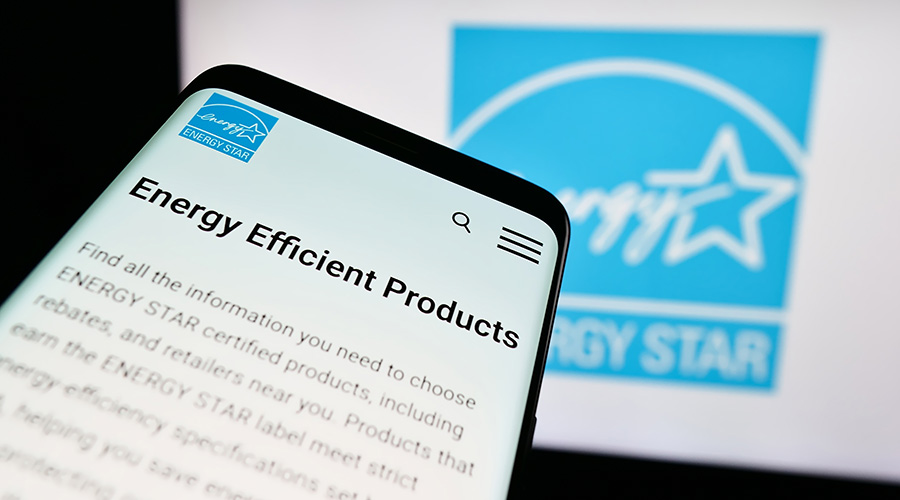Green as a Healing Strategy
Managers in health care facilities offer insights on linking green-purchasing strategies to the organization's mission
Environmentally friendly products give maintenance and engineering managers an opportunity to help protect the environment. But for managers in health care organizations, green products also support their organizations’ mission by contributing to a healthier environment.
“Green purchasing and sustainable design have a direct link to our mission and values, which includes improving and enhancing the patients’ experience,” says Gary Kusnierz, director of development and construction for Affinity Health System in Appleton, Wis. His organization, which has won awards for its environmental efforts, includes two hospitals and 21 medical clinics.
“We want to create a healing environment that reduces the stress of patients and visitors,” he says. “I think green is a large part of our overall strategy.”
For some managers, replacing traditional products with green alternatives is also practical.
“We purchase green products whenever possible is because it is the right thing to do,” says Vic Tullie, director of maintenance at Borgess Medical Center in Kalamazoo, Mich. “It’s also cost-effective and helps us serve as a leader in the community.” His organization, which consists of more than 1 million square feet of facility space, also has won awards for its environmental efforts.
A successful green-purchasing strategy requires managers to create clear guidelines and research products to ensure they meet performance expectations.
Establishing Guidelines
Green-purchasing guidelines vary among organizations, but the primary goal is the same — to specify environmentally friendly products that generate minimal or no harm to the environment. Guidelines might request or require managers to specify products that are recycled, recyclable, biodegradable, or less toxic, or that contain less packaging. They also might require managers to consider products that conserve energy and natural resources, such as energy-efficient lighting and water-saving plumbing fixtures.
But implementing a green strategy is much more than just purchasing environmentally friendly chemicals, Tullie says. Managers also should look at ways to reduce their use of fossil fuels and generate less waste.
When possible, Tullie specifies products with packaging that minimizes waste, products and packaging made from recycled and recyclable materials, and mercury- and asbestos-free products.
His organization’s purchasing department reviews all specification requests to ensure compliance with the green-purchasing guidelines. A successful program, however, requires support from all departments.
For example, Tullie’s department took the lead in replacing chemicals from its inventory — including ethylene oxide, a sterilization chemical, and diethylamine, a chemical for water-treatment systems in boilers — with green alternatives.
Gathering Information
Thanks to the growing demand for green products and services, an expanding wealth of information on green alternatives is available through various organizations.
“There is a lot of information on environmentally friendly products that is easy to obtain,” Tullie says. In addition to turning to the internet and organizations such as Hospitals for a Healthy Environment for information, he advises managers to talk with community leaders and managers from similar organizations for recommendations.
Kusnierz also relies on a variety of resources for advice on green alternatives, such as the GreenGuard Environmental Institute for its list of certified furnishings made with recycled material. His main resource has been the U.S. Green Buildings Council’s Leadership in Energy and Environmental Design (LEED) program.
“We changed our philosophy to follow the LEED standards,” he says. “That has triggered a whole different methodology in our purchasing. When we started to pursue environmental friendliness and sustainable design, it didn’t matter to us that we become LEED certified. We just wanted to make sure we were following the values of our organization.”
So far, his organization has received LEED certification for one clinic and hopes to do the same for five more sites this spring.
“Even though we might not seek certification for all of our sites, we will still follow LEED standards and principles,” he says.
Manufacturers and vendors also can serve as a resource on green alternatives.
“We like to partner with people who are knowledgeable on the subject manner,” Kusnierz says. For example, his organization’s furnishings provider delivers materials in blankets rather than traditional packaging.
“It eliminates the waste of packaging the items in plastic wrap and cardboard,” says Darin Schoening, Affinity Health System’s manager of construction and development. “After they deliver the items, they undo the blankets and reuse them time and time again for shipping purposes. Solutions like that, which people don’t even think of, can make a big difference.”
In other cases, organizations can educate their contractors and suppliers.
“While many of our vendors have had some experience with green strategies, others use us as a springboard to gain that experience,” Kusnierz says.
Adds Schoening, “Sometimes, the learning process is a trickle down effect.” For instance, a manager might hire a contractor who appoints subcontractors for the job. Those individuals learn about the process and use that experience in future projects.
Lessons Learned
Despite their efforts in researching green alternatives, managers might specify technologies that fail to meet expectations. Kusnierz’s organization once specified a wheat-board cabinets because they were formaldehyde-free and contained low levels of volatile organic compounds.
After the facility was occupied for a very short time, many of the screws holding the cabinets together pulled out because the material no longer could hold them, he says. In another bad experience, Kusnierz’s organization used recycled blue jeans for insulation on the interior walls of one of its clinics.
“We wanted to insulate those rooms to limit the transmission of sound between exam rooms and physician offices and ensure patient confidentiality,” he says. “It has similar sound-absorbing characteristics as fiberglass insulation, but it is very heavy. So when the contractors put it up, we think that it actually fell down and smooshed together. Now, some areas between the walls are no longer insulated.”
Before specifying, managers should carefully review the manufacturer’s recommendations. Kusnierz’s organization learned this lesson the hard way when it specified environmentally friendly water-based floor adhesive. In some areas, the floor bubbled up because of poor adhesive performance.
“We found out that we can continue to use the adhesive on future projects,” he says. “We just have to spec out a different concrete sealer prior to putting on that adhesive. Then it seems to work just fine.”
In most cases, the green products Kusnierz has specified have met or exceeded his expectations. For example, the recyclable, 100-percent natural rubber flooring his organization purchases has low life-cycle costs and is inexpensive to maintain, compared to other floors, he says.
In a few instances, Kusnierz has been amazed by the benefits of environmentally friendly products. For example, his organization performed a study after specifying an alcohol-based hand-washing solution at one of its clinics. The 12,000-square-foot facility houses six physician offices.
“We discovered that when the care staff uses that hand-washing solution, we consume 39 percent less potable water,” he says. “It was amazing to me that we could lower our water consumption by that much.”
The more his organization makes efforts to purchase green products and services, the more his organization learns, Kusnierz says.
“It seems like in every project, we learn something new and we add it to our list of good things to do for the next one,” he says.
Says Schoening, “I think a lot of people are reluctant to get into green purchasing because they assume that there is going to be an increase in costs and that is not always the case.”
In fact, managers might discover they can decrease their overall costs by specifying green products. For this reason, green purchasing isn’t just good environmental sense. It’s good business sense.
Recycling: The Final Phase
A green-purchasing program is not complete without a recycling program.
“Since implementing our recycling program, we have reduced our solid waste stream considerably,” says Vic Tullie, director of maintenance at Borgess Medical Center in Kalamazoo, Mich. His organization recycles about 30 percent of its solid waste stream, including materials such as paper, cardboard, linen, plastic, oil, steel, scrap metal, food, wooden pallets, ink-jet cartridges, foam peanuts, batteries, computers and other electronic equipment.
In some cases, recycling is mandatory. For example, the facility’s energy-efficient fluorescent light tubes contain a small amount of mercury and his department needs to recycle them.
His organization also has looked at materials not covered by recycling regulations for opportunities to minimize landfill waste.
“We recycle any kind of lead, like the aprons used in radiology,” he says, adding that such initiatives have financial benefits.
“People don’t realize that they’re saving money by minimizing the amount of waste they send to the landfill,” he says. Organizations must pay a charge for every ton of waste that goes to the landfill. Recycling can help them avoid those landfill charges.
“You might save as much as $25-30 a ton,” he says. “When you’re dealing in thousands of tons, it adds up pretty fast.”
Tullie’s department often looks for other organizations that can use items, such as furniture, that his facilities no longer need. Donating such items is a great way to give back to the community and increase the life cycle of those items.
— Renee L. Shroades
|
Related Topics:











